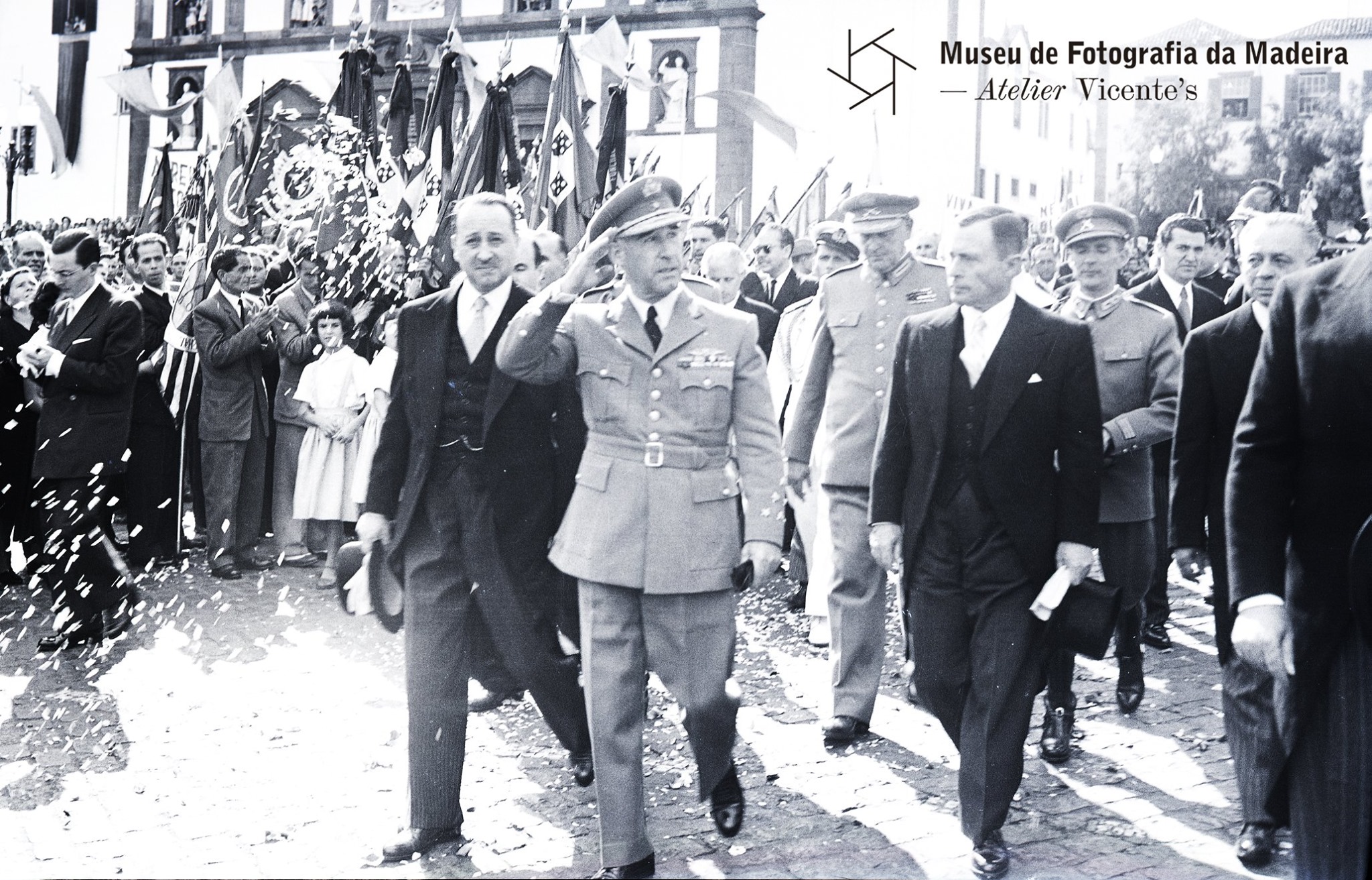Francisco Higino Craveiro Lopes (n. Lisbon 12/04/1894; f. Lisbon 02/09/1964).
His visit to the archipelago of Madeira took place between May 30 and June 2, 1955. Nowadays Presidential visits occur more frequently, but in the past, these visits took place on rare occasions and were cause for rejoicing. Mota de Vasconcelos, in his book “Memória Histórica da Visita do Presidente General Craveiro Lopes ao Arquipélago da Madeira” (author's edition published in 1956), writes all the details of the event over 144 pages, with several photographs taken by professionals from the island.
Before Craveiro Lopes, there is only record of the presidential visit of Dr. António José de Almeida (1866-1929) in 1922, and from general António Óscar Carmona (1869-1951) in 1938, following his state visit to the colonies overseas.
Craveiro Lopes was received with all the pomp and respect not only by the official entities but also by the population, who filled the streets with vibrant expressions of enthusiasm, in a constant flurry of flags in national colors, claps of applause, cheers, release of petals and musical performances by various municipal bands. In a clear act of political propagation of the “Estado Novo”, municipal firefighters joined; National Union Council Commissions; Portuguese Youth; athletes from “Club Sport Maritimo”, cycling section of the Cultural Group of Santa Maria, Hockey Club of Madeira; Soldiers from the Independent Infantry Battalion 19 and guards from the Public Security Police.
In his first official act of the visit, the President of the Republic went to the City Hall, to attend a solemn welcome session, where he spoke to the present crowd. He announced that the works of the Port of Funchal were coming soon and highlighted the work to make water resources more profitable throughout the island. He went to the Cathedral, where he saw a Te Deum, and then placed flowers on the Gonçalves Zarco monument. The day ended at the São Lourenço palace, where the civil governor offered a banquet. The following day, on May 31, he visited the west side of the island for a long time, heading east, on June 1, where he inaugurated the water and electricity supply infrastructures for the parishes of Porto da Cruz, Machico and Santa Cruz . On the same day, in Funchal, he opened the Museum of “Arte Sacra” and visited the hospital and sanatoriums, followed by a "Garden Party" offered by the civil governor, ending the day with dinner at the São Lourenço palace. At the end of the visit, on 2 June, Craveiro Lopes was at the viewpoints of “Pico dos Barcelos” and “Eira do Serrado”, from where he went for a brief visit to the island of Porto Santo, returning to Lisbon in the late afternoon.
Born into a family with a long military tradition that dates back to the monarchy (his great-grandfather, grandfather and father all achieved the rank of general), he was the son of the general of the Portuguese army and General-Governor of Portuguese India, João Carlos Craveiro Lopes (1871-1945). Craveiro Lopes from a young age had a military education and, at the age of 17, enlisted as a volunteer in the Cavalry Regiment no. 2. He was mobilized to Mozambique in 1915, where he fought the German forces during the First World War, having been awarded with the Military Order of the Tower and Sword, of Valor, Loyalty and Merit in 1917. In 1918, he took a military pilot course at the French Aviation School (Chartres), being promoted to Lieutenant. In the field of aviation, it achieved great things, notably the first airmail flight between Goa and Bombay. In India, he assumed the role of the General-Governor Office (1933-1934), was interim governor of the district of Daman (1934) and in charge of the general government of India, on an interim title (1936-1938). He commanded the Tancos Air Base as a Lieutenant Colonel (1939) and the Air Base of “Terceira” island (1941). He was chief commander of the Portuguese Legion between 1944 and 1950, and during that period he achieved the rank of general and was elected as a deputy to the National Assembly. He became the President of the Portuguese Republic between 1951 and 1958, but was not proposed for a second term due to the cooling relations with Salazar and close contact with the opposite leaders. Soon after his departure from active politics, he reached the rank of Marshal.
Credits: Museu de Fotografia da Madeira - Atelier Vicente's.

PHOTOGRAPHIA VICENTE | Presidential procession at the arrival of “Largo do Colégio” for the solemn welcome session at the City Hall | 1955-05-30
6 x 9 cm | Simple negative, film | Silver salt gelatin
VIC / 21474

